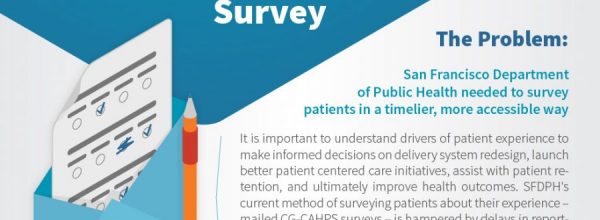Supported by Blue Shield of California Foundation, the Cultivate Fund program provided support for innovators in the safety net to make the leaps needed to bring ideas from concept to implementation and develop solutions that can be spread and sustained.
Read about the successes and challenges of this program in three case studies:
- Northeast Valley Health Corporation
- San Francisco Department of Public Health
- Livingston Community Health
Background
In a joint effort with Blue Shield of California Foundation, the Center for Care Innovations (CCI) launched a new competitive grants program, the Cultivate Fund, in November 2014. Similar in design to CCI’s Safety Net Innovation Challenge competitive grants program, the Cultivate Fund enables safety net innovation teams to design and implement an innovation over a 10-month period, focusing on access to care, patient engagement, and/or population health management. Grant awards were up to $30,000, and innovation teams were given access to an innovation coach, evaluator, and an online learning community of safety net champions trained in human-centered design through CCI’s Catalyst community. Teams also were given access to weekly curbside consult calls staffed by design coaches from Kaiser Permanente Innovation Consultancy. Innovation teams participated in a series of periodic webinars (virtual meet-ups) to share lessons, tools, exchange ideas, and get feedback on similar projects.
Seven teams were selected with projects running from around mid-February 2015 through the end of January 2016. Innovation teams were expected to develop an initial design strategy including anticipated metrics, report on their midterm progress through a short video, and then prepare an “adoption guide” for their final report. The adoption guide is a useful way to structure an organizational plan needed to successfully adopt, implement, and sustain an innovation.
Three teams designed and implemented new work flows around digital patient survey tools: Livingston Community Health, Northeast Valley Health Corporation, and San Francisco Department of Public Health. Organizations explored the use of patient survey tools for a variety of reasons, including digital registration, experience of care, and a way to facilitate a discussion of health concerns between patients and their providers. This case study documents the teams’ experiences with testing digital patient survey tools along with challenges faced and lessons learned along the way.
Exploring Digital Patient Survey Technology Solutions
The innovation team at Northeast Valley Health Corporation, led by Debra Rosen RN, MPH, Director of Quality and Health Education, was interested in implementing a solution to improve the efficiency of the registration process and to implement their agenda-setting tool, used to engage the patient during an office visit. While a goal of the innovation was to reduce the average cycle time for the patient, a primary goal for the team was to maximize the time the patient spends with the provider or other members of the care team (“value-added” time) and minimize the time spent waiting (“non-value-added time”).
Since March 2012, the Primary Care division of the San Francisco Health Network, an integrated service delivery arm of the San Francisco Department of Public Health (SFDPH), has used the CAHPS Clinician & Group Survey (CG-CAPHS) to measure patient experience. The CG-CAHPS asks patients to report on and rate their recent experiences with clinicians and their staff. The survey is mailed out to patients on a rolling basis. Although response rates at SFDPH are comparable to similar settings, a 3-month lag exists between the date of the patient encounter and the time survey results become available. This lag time prevents health care delivery teams from assessing their effectiveness and making adjustments in a timely manner. In addition to low completion rates and reporting lag, other concerns include patients’ ability to understand the questions and an inability to tailor questions to interventions for timely feedback. The innovation team’s goals for the project were to co-design and develop a point-of-care electronic CG-CAHPS survey and test the use of the digital survey along with several locally developed questions intended to inform the team’s improvement work.
Livingston Community Health’s innovation team, led by Felicia Batts, MPH, Director of Care Integration, was interested in implementing a technology solution that provided meaningful feedback from patients in a timely manner. Along with other organizations that traditionally use mail surveys to solicit patient feedback, Livingston Community Health experiences low survey completion rates of 8-9% each month. Mail surveys also introduce other barriers, including the lack of real-time feedback on health services (i.e., patients complete the survey a week or two after their visit) and a missed opportunity for patient engagement. A technology solution could allow the team to immediately survey patients upon exit from their primary care visits, which also would eliminate the complexities of mail surveys. The team could use this information in real time by monitoring which processes were properly working and which ones were not.
The following recounts each innovation team’s journey through the implementation of their technology solution, followed by a summary of cross-site lessons learned during this process. Finally, a summary table provides each team’s “before” and “after” impressions of the new technology across a number of factors.
Find this useful or interesting? We’re constantly sharing stuff like this. Sign up to receive our newsletter to stay in the loop.


